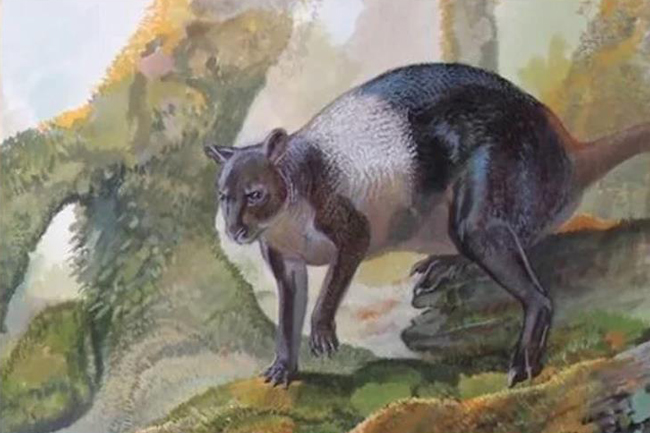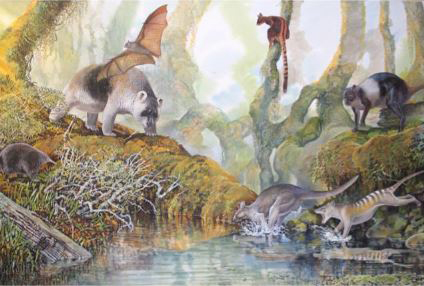Robust Roo from Papua New Guinea
Scientists have described a new genus of robust kangaroo from fossils found in late Pleistocene deposits in Papua New Guinea. Analysis suggests that it was not closely related to kangaroos found today in Australia.
Protemnodon nombe
Researchers from Flinders University examined two partial dentaries (lower jaw bones) that had been previously assigned to the Protemnodon genus and named P. nombe. They identified unique characteristics in the teeth and the shape of the bones that led them to conclude that the fossils were sufficiently different from other Protemnodon material to be assigned their own genus. The ancient kangaroo has been named Nombe nombe honouring the Nombe Rockshelter where the fossils were discovered.

A New Guinea/Australia Land Bridge
During the Miocene Epoch, around 5-8 million years ago, lower global sea levels permitted a land bridge between Australia and Papua New Guinea to form. This led to a faunal interchange between the two regions. An ancient form of Australian kangaroo migrated northwards and entered the territory now known as Papua New Guinea. When sea levels rose and the Torres Strait was formed, these ancient kangaroos were able to evolve in isolation away from their Australian ancestors.

A Robust Kangaroo
Co-author of the scientific paper published in the Transactions of the Royal Society of South Australia, PhD student Isaac Kerr commented:
“The New Guinean fauna is fascinating, but very few Australians have much of an idea of what’s actually there.”
Co-author of the paper, Professor Gavin Prideaux (Flinders University), explained that excavations at the Nombe Rockshelter and elsewhere in central Papua New Guinea are providing palaeontologists with evidence of a unique ecosystem on the island, a biota dominated by prehistoric marsupials that were adapted to their mountainous, tropical environment. Flinders University hopes to be able to undertake more extensive fieldwork over the next three years and they are confident that these excavations will unearth new species.

Everything Dinosaur acknowledges the assistance of a media release from Flinders University in the compilation of this article.
The scientific paper: “A new genus of fossil kangaroo from late Pleistocene New Guinea” by Isaac A. R. Kerr and Gavin J. Prideaux published in the Transactions of the Royal Society of South Australia.
Visit Everything Dinosaur’s award-winning website: Everything Dinosaur.

